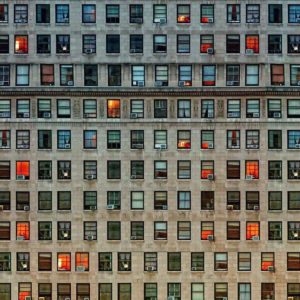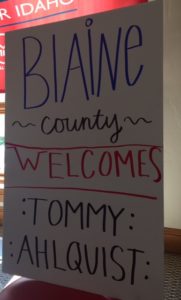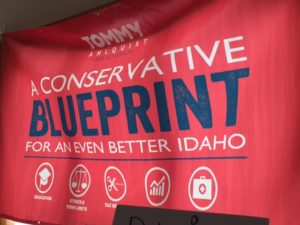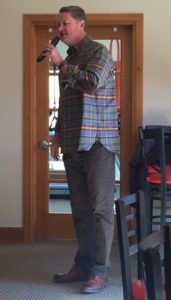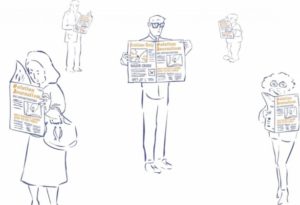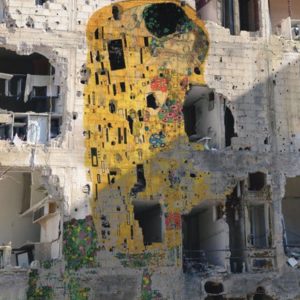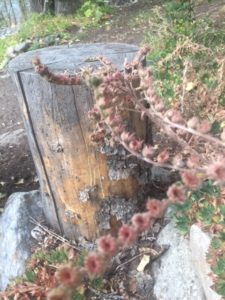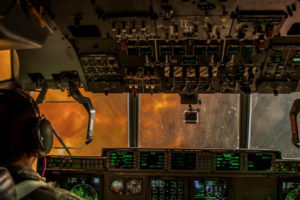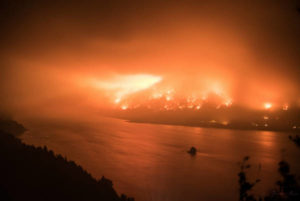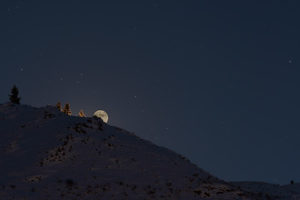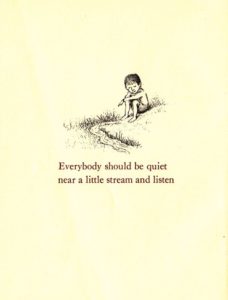‘Souls with dreams behind every window…’
September 30, 2017Jennifer Rose.
︶⁀⁀︶︶⁀⁀︶
If you try to comprehend air
before breathing it,
you will die.
We can only consider things so long. After a while, all the information – – all the options and opinions – – will begin to weight us down. After our deeper eyes have seen the situation, all the well-meaning voices telling us what we should or should not do will start to feel like strings we can’t cut through.
It is natural enough to be cautious and thoughtful, especially when faced with important decisions, but often the only way to know what awaits us is to live it.
This brings to mind the revelation that came upon a Hindu sage centuries ago, One day in the middle of their morning prayers, the sage suddenly rose and ushered his students away from the monastery. He rushed about them and shooed them back into life like little ducks, proclaiming, “the day is to be experienced, not understood.”
[meditation]
° Center ourself while holding a glass of water and an empty cup.
° Consider the choices that away you while during the water from one glass to the other.
° When you tire of the pouring, breathe deeply and drink the water.
° Now enter your life.
Mark Nepo/Book of Awakening
Tommy Ahlquist in Hailey
September 29, 2017Republican Idaho Gubernatorial candidate Tommy Ahlquist spoke at the Senior Connection in Hailey, Friday, Sept. 29th, as he continues a 44-county state tour in 44-days. He talked about his three-legged platform focused on jobs, education, and healthcare.
Introduction
Bio
Jobs
Education
Healthcare
Audience Questions
#1:
Idaho’s Medicaid Gap & Compare/Contrast to Other Gubernatorial Candidates Brad Little and Raul Labrador
#2:
Idaho Governor in a Politically Polarized Nation
#3
Trade/Vocation Education in Idaho
#4
Four-Day School Week & Improving K-12 Funding
#5
Senior Connection Medicaid Comment
#6
Senior Employment
For more information about KTEC/Kootenai Technical Education Campus mentioned in question #3, visit ktectraining.org.
Turn it off.
‘Turn off your TV and think for yourself.’
-Banksy
[Social media, too; at the very least, be aware and a proactive consumer of news and information shared/posted on fb & twitter in context of alternate news and fake news infiltrating our virtual media.]
“A clinical psychologist on the anxiety our politics appears to be causing.”
To get practical: For individuals experiencing anxiety that causes significant distress or interferes with day to day life, it’s a good idea to see a mental health professional for a few sessions to get some strategies to cope. As a starting point, however, when we feel overwhelmed by political or other anxiety, it’s usually time to refocus on self-care.
“I would’ve said something.”
I believe what the self-centered have torn down, the other-centered will build up.
MLK
• • • •
“If I could have did something different, I would’ve said something. But that’s what evil depends on, good people to be quiet.”
Dr. William Lynn Weaver in Fayetteville, NC, speaking to the racism experience at his integrated school in 1964.
“Weaver has never been back to West High School since graduating 50 years ago. After hearing a StoryCorps interview that aired on NPR last month, the current principal reached out, and Weaver says he will return to the school in early 2018 to talk to the students about his experiences with integrating the school.”
StoryCorps/NPR
http://www.npr.org/2017/09/29/551235513/-evil-depends-on-good-people-to-be-quiet
Who am I? Soham. सो ऽहम्
September 15, 2017☆☆¸.•*¨*•☆☆•*¨*•.¸¸☆☆
Dearest Gaia:
I open my whole consciousness to the realization that all the power and presence there is surrounds me in an eternal embrace, that the Spirit forever imparts Its own Life to me.
Knowing that I cannot live unto myself alone, but that I am a part of all Life, I gladly and enthusiastically unify with people, conditions, and events, flowing into them with the certain knowledge that I belong to the universe in which I live, that this universe belongs to me, that I am a part of it, necessary to it, one with it. (We are one.)
-Earnest Holmes/Science of Mind
[Translation: Soham…”I am that.”]
#CassiniFinale
Perspective check. That little blue dot with the arrow? That’s us. ☆ “On its final orbit, Cassini plunged into Saturn, fighting to keep its antenna pointed at Earth as it transmits its farewell, a comforting voice narrates as the music swells. In the skies of Saturn, the journey ends, as Cassini becomes part of the planet itself.”
Cat.
September 11, 2017‘Poverty eradication is definitely a way to peace.’
Yusef Islam
‘One of the most influential singer-songwriters of all time releases his
latest studio album, The Laughing Apple. The Laughing Apple features original songs and covers, though the covers on this album are Yusufs own. He celebrates some of his earliest material, with new presentations of the songs. Conceptually, The Laughing Apple returns to the journey of the Tillerman, as he recalls his travels and life lessons to a younger generation. The album’s cover features Yusufs own illustration, the first time he has designed one of his covers since 1972. Yusuf has drawn additional works of art for each of the 11 songs on The Laughing Apple.’
“Slowly let me tell you a story of a tree
An apple tree,
Once in a summertime garden lived a little apple tree
And the man who owned it wanted it to be picked
So he sent forth to hire me
Well, I’ve traveled the mountains, and I’ve traveled the sea
But a never in my traveling days
Have I ever seen a little apple smile at me!
Laugh, oh laugh a little apple
Autumn is waitin’, you’d better be careful,
For it will bring you down
If it ever sees you wearing a frown
So laugh, laugh a little apple
Well all the apples were hidin’
Frightened that they might be plucked
And everytime that somebody passed
All except that one little apple ducked
Well, I’ve traveled the mountains, and I’ve traveled the sea
But a never in my traveling days
Have I ever seen a little apple smile at me!
Laugh, oh laugh a little apple
Autumn is waitin’, you’d better be careful,
For it will bring you down
If it ever sees you wearing a frown
So laugh, laugh a little apple”
Sorrow in Song
DJ Sessions: Remembering 9/11 Through Music
Rita Houston was unable to get to work on Sept. 11, 2001. Blocked by the chaos surrounding the World Trade Center towers in New York, she stayed at home and called into WFUV, where she is a DJ. On that day and in the weeks to follow, listeners made repeated requests for songs that brought them comfort and reminded them of the character of New York.
Here & Now‘s Jeremy Hobson talks about those songs with Houston, now host of the show “The Whole Wide World” and program director at WFUV, which is based in the Bronx at Fordham University.
http://www.wbur.org/hereandnow/2017/09/08/dj-sessions-september-11-music
Ryan Adams, “New York, New York”
Dar Williams, “Better Things”
Paul Simon, “Was a Sunny Day”
A new paradigm for journalism.
‘When we fiercely hate one another, we make ourselves vulnerable to propaganda and demagogues. Hate blinds people to the truth.’
Jimmy Carter’s advice for President Trump: “Keep the peace, tell the truth”
Rose’s canon.
‘In our age, tragedies are collective & shared across the world, & even in the darkest moments of destruction, unity & love always emerge.’
Let’s bring back:
✿ Emotions
✿ Creativity
✿ Intuition
✿ Justice
✿ Peace
✿ Nature
✿ Love
-Jennifer Rose
@SeeTheRoses
And they waved.
September 9, 2017A mural in Tecate, Mexico, sits just beyond a border structure, seen from Tecate, Calif. (AP’s Gregory Bull)
- “The boy appears to grip the barrier with his fingers, leaving the impression the entire thing could be toppled with a giggle.”
- “A French artist who goes by the moniker ‘JR’ erected the cut-out of the boy that stands nearly 65 feet … tall and is meant to prompt discussion of immigration.”
- Yesterday, “a steady stream of people drove to the remote section of wall near the Tecate border crossing, about 40 miles … southeast of San Diego. Border Patrol agents warned visitors to keep the dirt road clear for their patrols and not pass anything through the fence.”
- “On the Mexican side, families scrambled down a scrubby hillside to take selfies with the artwork. Children in school uniforms played tag under the scaffolding supporting the photo.”
- Sentence of the day: “People on each side of the wall waved to each other.”
- “For artists and activists, the 650 miles of existing wall and fencing between the U.S. and Mexico has long been a blank canvas. Musicians have played simultaneously on both sides. … There have been volleyball games and church services held simultaneously on each side of the border.”
- “Sections of wall on the Mexican side have been covered with paintings of everything from butterflies to an upside-down American flag.”
Vincent knew.
normality
is a paved
road. it is
comfortable to walk on but
no flowers grow on
it.
-van gogh
Beyond why.
“For so many years, talking about the weather was talking about nothing. Now it really is our survival.”
-Terry Tempest Williams
“Climate change debate is over, now it’s about climate adaptation.”
-Craig Fugate, former director of the Federal Emergency Management
︶⁀°• •° ⁀︶
We must change the narrative. The planet has drastically and rapidly moved beyond the ‘why’ of climate change. The collective needs to desperately and pragmatically admit the climate has indeed ‘changed’. The Earth’s equilibrium has been altered. How do we live in this new ecosystem while protecting, and taking care of each other…and Gaia? The earth needs to know we are trying.
Inside Climate News
Potent Mix of Record Heat and Dryness Fuels Wildfires Across the West
by Georgina Gustin
Wildfires burned across hundreds of thousands of acres in the American and Canadian West this week, fueled by scorching temperatures that are breaking heat and fire records across the region.
In California, while temperatures have eased, at least 15 cities have seen record-breaking heat, and the state has experienced its hottest summer on record. San Francisco hit 106 degrees over the weekend, breaking its previous high by 3 degrees. Stoked by unusually high temperatures, fires burned on thousands of acres just outside Los Angeles, while firefighters in Washington, Oregon and Montana battled dozens of blazes across those states.
By the end of the day Tuesday, at least 81 large fires were blazing across 1.5 million acres of the U.S. West, from Colorado to California and north to Washington. Over the Canadian border, British Columbia has already had a record-breaking fire season—and it’s not over yet. Cities including Seattle were shrouded in a smoky fog. In satellite pictures, the smoke could be seen traveling the jet stream and reaching the East Coast.
As firefighters battled the blazes, climate researchers pointed to studies finding that a warmed global atmosphere, with increasingly clear human fingerprints, will continue driving a potent mix of heat and dryness that’s projected to escalate in the West.
“These unprecedented extreme events, on the daily to the seasonal scale, are exactly the types of events that are more likely due to the global warming that’s already occurred,” said Daniel Swain, a climate scientist at UCLA. “That’s not so much a future projection, but an observational reality, and that’s something we expect to increase in the future. When we get these extremes, there’s a human fingerprint.”
Swain co-authored a study led by Stanford researcher Noah Diffenbaugh published earlier this year that found human-caused greenhouse gas emissions have increased the chances of extreme heat across more than 80 percent of the globe’s surface area.
“The increased occurrence of severe heat, and the role of global warming on the occurrence of severe heat—that’s already happening,” Diffenbaugh said. “It wouldn’t be scientifically credible to make attribution statements without analyzing the event. That being said, we can see the odds of setting new records based on the global warming that’s already happening.”
While drought and high heat aren’t the only factors making wildfires more intense and frequent—researchers also blame encroaching development into wild areas and certain wildfire management practices—they are key drivers.
Nine of the 10 worst fire seasons in the past 50 years have all happened since 2000, and 2015 was the worst fire season in U.S. history, surpassing 10 million acres for the first time on record. So far this year, wildfires in the U.S. have burned 7.8 million acres, but the fire season is far from over. (In 2015, 8.4 million acreshad burned by early September.) The average fire season is 78 days longer than it was in the 1970s—now nearly seven months—beginning and extending beyond the typical heat of summer. By April of this year, wildfires had scorched more than 2 million acres in the U.S.—nearly the average consumed in entire fire seasons during the 1980s.
Last fall, researchers published the results of a study that found human-induced climate change accounted for about half the observed increase in fuel aridity, or forest dryness, in the western U.S. since 1979 and had nearly doubled the area of the U.S. West affected by forest fires since 1984.
During that same time period, temperatures across the West have risen. Temperatures are projected to rise further—and along with them, the tinderbox conditions that fuel wildfires.
“We know that global warming has already increased the probability of unprecedented high temperatures in the western U.S., including in California,” Diffenbaugh said. “And we know, with high confidence, that continued global warming will continue to intensify those increases.”
A forest fire spread along the Columbia River Gorge on Sept. 5, 2017. Credit: James C. Kling/CC-BY-2.0
The Atlantic
Has Climate Change Intensified 2017’s Western Wildfires?
It was supposed to be a quiet year.
by Robinson Meyer
Last winter, a weak La Niña bloomed across the Pacific. It sent flume after flume of rain to North America and irrigated half the continent. Water penetrated deep into the soil of Western forests, and mammoth snowdrifts stacked up across the Sierra Nevadas. California’s drought ended in the washout.
Yet fires are now raging across the West. More than two dozen named firescurrently burn across Washington and Oregon. More than one million acres have burned in Montana, an area larger than Rhode Island, in the Treasure State’s third-worst fire season on record. And the largest brushfire in the history of Los Angeles currently threatens hundreds of homes in Burbank.
A firefighter battles the Ponderosa Fire east of Oroville, California, in late August. Noah Berger / Reuters
Canada may be experiencing an even worse year for wildfires: 2.86 million acres have burned in British Columbia, the largest area ever recorded in the province.
So what happened? How did a wet Western winter lead to a sky-choking summer?
The answer lies in the summer’s record-breaking heat, say wildfire experts. Days of near-100-degree-Fahrenheit temperatures cooked the Mountain West in early July, and a scorching heat wave lingered over the Pacific Northwest in early August.
“This will become an important year for [anecdotes about] the importance of temperature. Despite the fact that these forests were really soaked down this winter and spring, these heat waves have dried things out enough to promote really large fires,” says Park Williams, a research scientist at the Lamont-Doherty Earth Observatory at Columbia University.
“Since the 1980s, we’ve only burnt about 10 percent of the western U.S. forests. And that number to me means that there’s still a whole lot more to burn,” Williams said. He estimated that it would take another several decades for that excess century of fuel to burn out of the American woods. And in the meantime, the planet will only get hotter.
“According to climate models, by the end of this century, the western United States is still projected to warm by about another 3.5 degrees Celsius,” he told me. “And when we remember that the relationship between temperature and fire is exponential … we’re really talking about a very different western United States in 50 years.”
‘Don’t worry about triumph.’
September 8, 2017BrainPickings/Maria Popova
In a 1933 letter to his 11-year-old daughter Scottie, F. Scott Fitzgerald produced this poignant and wise list of things to worry, not worry, and think about, found in the altogether excellent F. Scott Fitzgerald: A Life in Letters:
Things to worry about:
Worry about courage
Worry about Cleanliness
Worry about efficiency
Worry about horsemanship
Worry about…Things not to worry about:
Don’t worry about popular opinion
Don’t worry about dolls
Don’t worry about the past
Don’t worry about the future
Don’t worry about growing up
Don’t worry about anybody getting ahead of you
Don’t worry about triumph
Don’t worry about failure unless it comes through your own fault
Don’t worry about mosquitoes
Don’t worry about flies
Don’t worry about insects in general
Don’t worry about parents
Don’t worry about boys
Don’t worry about disappointments
Don’t worry about pleasures
Don’t worry about satisfactionsThings to think about:
What am I really aiming at?
How good am I really in comparison to my contemporaries in regard to:(a) Scholarship
(b) Do I really understand about people and am I able to get along with them?
(c) Am I trying to make my body a useful instrument or am I neglecting it?
Notes from Jackson Pollack and Ronald Reagan to their own kids.
ღ
September 7, 2017Power Path ☆
September 4, 2017[photo: Nils Ribi]
September 6: Full Moon is Wednesday, September 6 at 1:03AM Mountain Daylight Time (MDT). You can also honor this moon the night of the 5th. The full moon marks a time of intensity. They say that you should always face your opponent, your fear, your challenge head on without cowering or showing fear. Not that this full moon is anything to fear, however it does mark a time of big energy that can be quite emotional.
We recommend that you use this moon to acknowledge courage, expansion, showing up and your own power and ability to change, adjust and be more. Use this full moon to energize your physical, emotional and spiritual self. Gather some chi from nature, from the sun, from the earth, the sky realm and all the unseen powers and allies around you. If you feel overwhelmed by the enormity, just acknowledge, accept and be OK with it. You’ll get used to it. It is like being sore after exercising a muscle that has not yet been used. If you continue, the discomfort will pass and you will be stronger for it.
The fallout from the eclipse is being well worked. […] There is no going back to “business as usual” nor would you want to. It is best to be as proactive as possible during this time and really work at adjusting yourself and your universe to a new frequency and higher vibration. Not everyone will be capable of this. Get support if you need it, don’t take things personally and stay out of other people’s drama as much as possible. Watch for accidents, pay attention and be present.
Visceral and immersive.
“The Vietnam War,” a 10-part, 18-hour documentary by Ken Burns and Lynn Novick, premieres on PBS on Sunday, Sept. 17.
There are more Vietnamese voices “The Vietnam War” than Burns at first thought necessary. … It has animated three-dimensional maps and foreign-language interviews. There’s rock music, as well as a score commissioned from Trent Reznor and Atticus Ross; Erik Ewers, a longtime editor at Florentine, who has worked on dozens of hours of film chivvied along by ragtime and bluegrass, told me, with feeling, that the opportunity to use “Dazed and Confused,” by Led Zeppelin, was “a dream come true.”
The film includes striking sequences in which well-known black-and-white photographs, always central to Burns’s work, coëxist with color film and color photography. The subject, being recent and contested—and its traumas sometimes evident in the stiffness around the mouths of witnesses—has its own narrative potency. … Still, when the narration begins, its liturgical phrasing, and its reach for a negotiated settlement among viewers, will seem familiar.
[The New Yorker’s Ian Parker]
In “Ken burns Tackles a Different Civil War,” N.Y. Times ideas reporter Jennifer Schuessler says the film “offers an uncannily well-timed reflection of our current societal fractures — a kind of origin story for the culture wars.”
- “The $30 million film, more than 10 years in the making, offers an intensely immersive, often head-spinning history lesson, combining grand sweep and archival depth with sometimes devastatingly emotional first-person interviews with people from all sides (including more than two dozen Vietnamese, from both the winning and losing sides).”
- “There are scenes covering 25 battles, 10 of which are examined from multiple perspectives.”
- “Every word of the script, written by the historian Geoffrey C. Ward, was carefully weighed. And perhaps none were as carefully debated as that opening narration, which describes the war as ending in ‘failure’ (not ‘defeat,’ Mr. Burns noted, though he used the word himself). ‘I think we probably spent six months on the word ‘failure.'”
- “As for ‘begun in good faith,’ Mr. Burns said he stands by those words, which he said reflect the intentions of those who fought the war, even if they are perhaps ‘too generous’ to our leaders.”
- Worth the click: “Shot by Shot: Building a Scene in Ken Burns and Lynn Novick’s Vietnam Epic.”
Labor’s Day of Repose
‘Leisure lives on affirmation. It is not the same as the absence of activity…or even as an inner quiet. It is rather like the stillness int he conversation of lovers, which is fed by their oneness.’
︶⁀°• •° ⁀︶
Maria Popova:
“We get such a kick out of looking forward to pleasures and rushing ahead to meet them that we can’t slow down enough to enjoy them when they come,” Alan Watts observed in 1970, aptly declaring us “a civilization which suffers from chronic disappointment.” Two millennia earlier, Aristotle asserted “This is the main question, with what activity one’s leisure is filled.”
[…]
So how did we end up so conflicted about cultivating a culture of leisure?
In 1948, only a year after the word “workaholic” was coined in Canada and a year before an American career counselor issued the first concentrated countercultural clarion call for rethinking work, the German philosopher Josef Pieper (May 4, 1904–November 6, 1997) penned Leisure, the Basis of Culture (public library) — a magnificent manifesto for reclaiming human dignity in a culture of compulsive workaholism, triply timely today, in an age when we have commodified our aliveness so much as to mistake making a living for having a life.
In a sentiment Pico Iyer would come to echo more than half a century later in his excellent treatise on the art of stillness, Pieper adds:
Leisure is a form of that stillness that is necessary preparation for accepting reality; only the person who is still can hear, and whoever is not still, cannot hear. Such stillness is not mere soundlessness or a dead muteness; it means, rather, that the soul’s power, as real, of responding to the real — a co-respondence, eternally established in nature — has not yet descended into words. Leisure is the disposition of perceptive understanding, of contemplative beholding, and immersion — in the real.
But there is something else, something larger, in this conception of leisure as “non-activity” — an invitation to commune with the immutable mystery of being. Pieper writes:
In leisure, there is … something of the serenity of “not-being-able-to-grasp,” of the recognition of the mysterious character of the world, and the confidence of blind faith, which can let things go as they will.
[…]
Leisure is not the attitude of the one who intervenes but of the one who opens himself; not of someone who seizes but of one who lets go, who lets himself go, and “go under,” almost as someone who falls asleep must let himself go… The surge of new life that flows out to us when we give ourselves to the contemplation of a blossoming rose, a sleeping child, or of a divine mystery — is this not like the surge of life that comes from deep, dreamless sleep?
[full article at brain pickings.org]
Whisper.
September 3, 2017“…Life is too short to not make people happy.”
-A taxi driver in New York City
